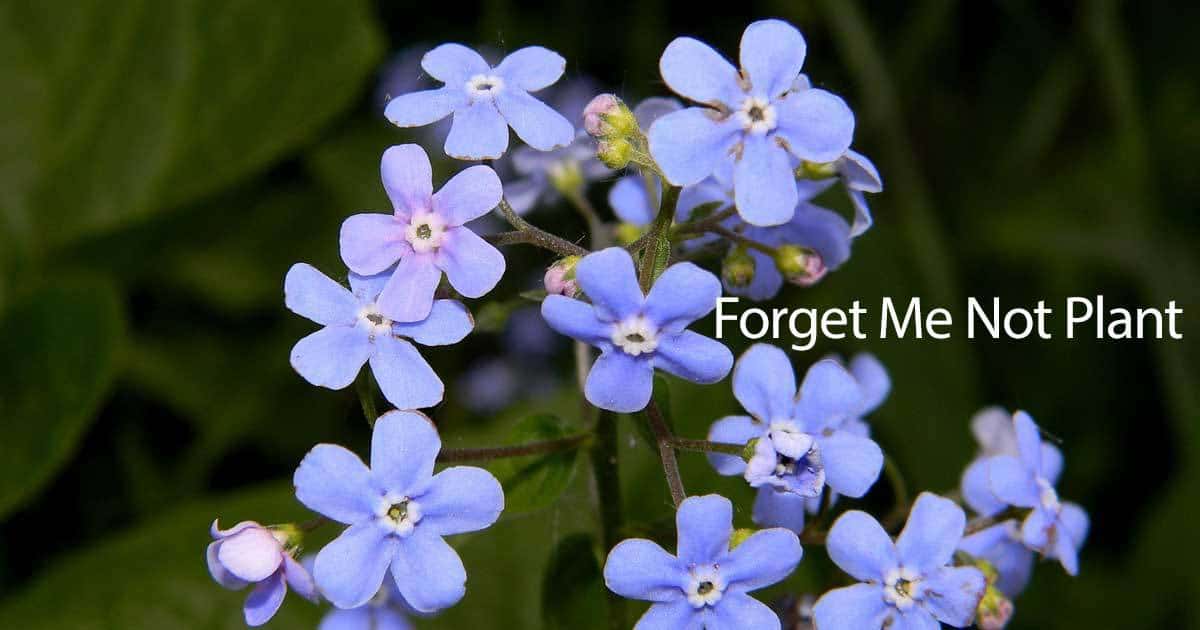Table of Contents
Myosotis Forget-me-Not plants are known for their beautiful blooming flowers, and they come with great history and symbolism. Many often wonder what to do with forget-me-nots after flowering. But after placing them anywhere, these Myosotis plants can elevate the beauty of the place, which is why they are considered one of the most beautiful flowering plants on the planet.
Members of the Boraginaceae family, there are about 50 species of the Myosotis Forget-me-Not plants. The name Myosotis is derived from Greek which means, Myos=Mouse, and otis=ear, Mouse-ear, which resembles the shape of the flowers of almost all the plants in the family. The plants are also known as Scorpion grass as they bloom in Spring, the time of the year when Scorpions are most active. The other infamous name, Forget-me-Not, has a legendary history. Few believe that these plants were created by Jesus Christ himself, who wants his children and the next generations to be able to see him and remember him, thus the name Forget-me-Not.
Well, let’s dive into some of the varieties of Myosotis Forget-me-Not plants and how to care for them.
Myosotis Forget-Me-Not Varieties
1. Water Forget-Me-Not
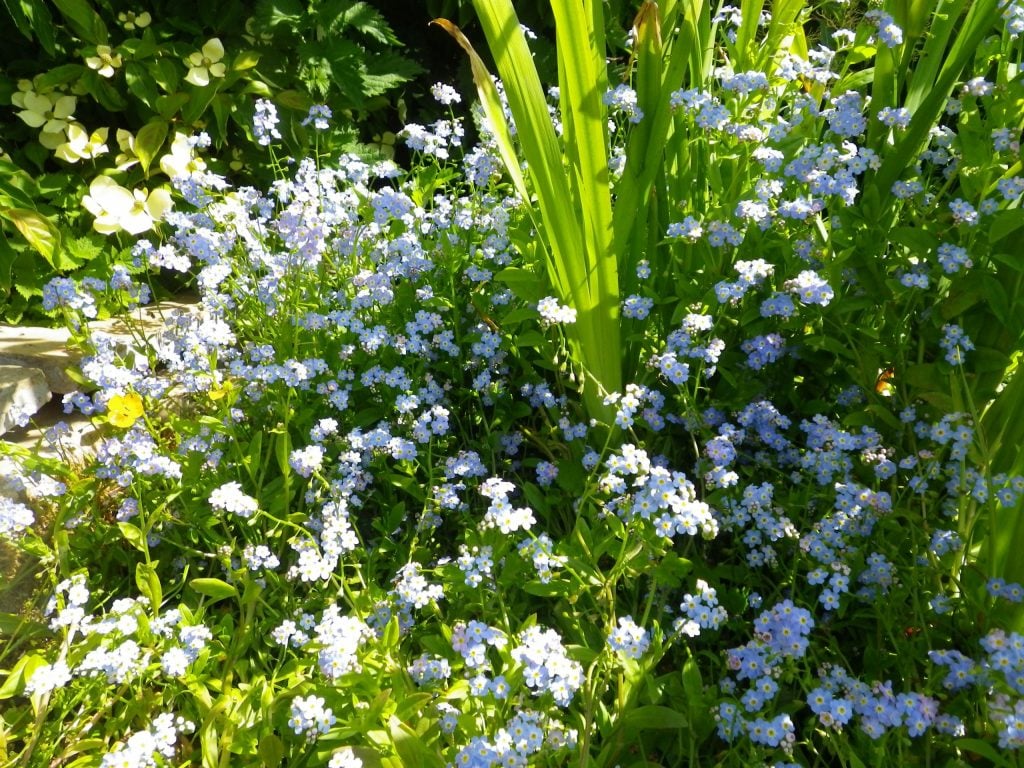
These plants, scientifically known as Myosotis Scorpioides, are commonly found in Europe, Asia, and North America. They are aquatic plants that grow easily on the shores of rivers, lakes, and ponds to attract butterflies. These plants grow up to a height of 12 inches and have pretty long stems. The leaves of this plant are green in colour, while the flowers bloom in different colours such as white, blue, pink, purple, etc., and they grow in bunches and have five petals each. Though these plants’ natural habitat is very wet and moist soil, they also require garden soil and need partial sunlight.
2. Strict Forget-Me-Not
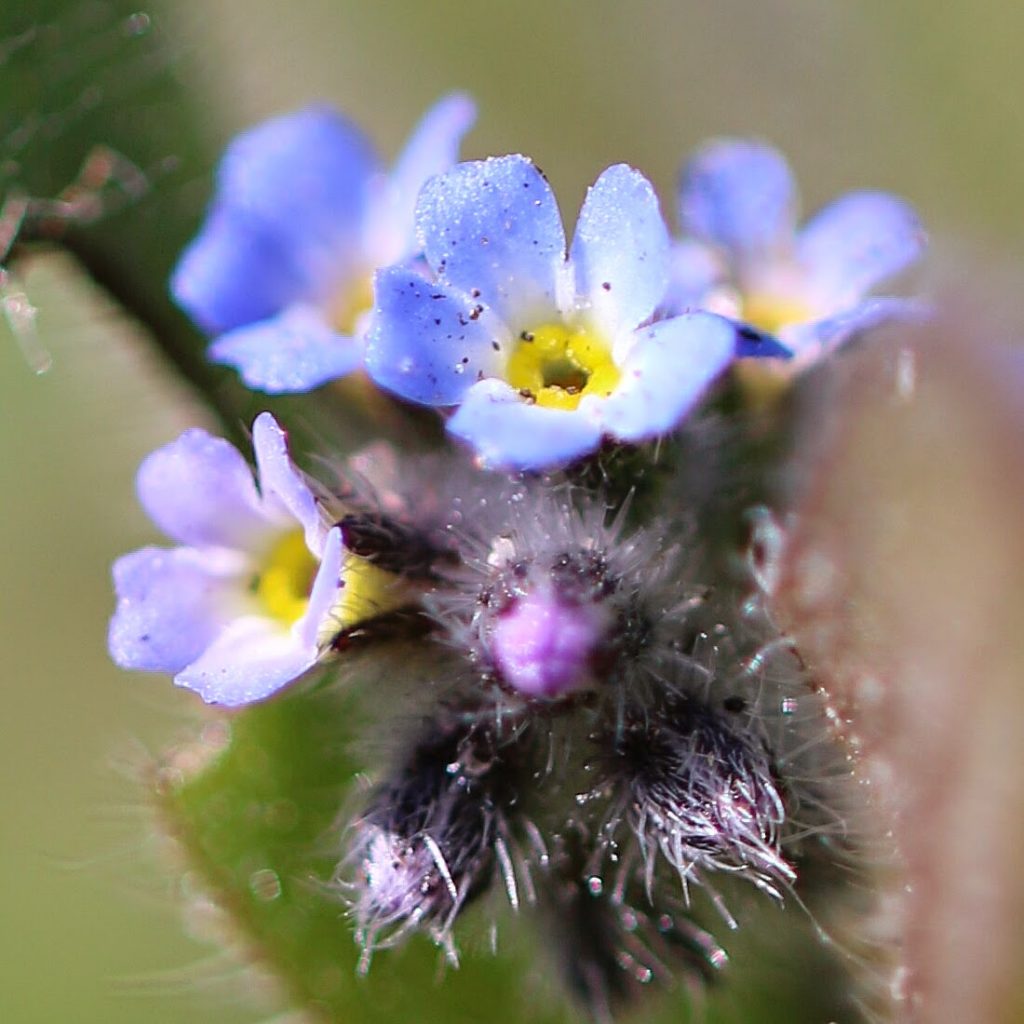
Also popularly known as the blue forget-me-not, they get their name for blooming beautiful blue flowers in bunches in Spring and Summer seasons. Botanically known as Myosotis Stricta, these plants can grow up to 8 inches and can often be seen growing in sandy and dry soil. The flowers of this plant are about 2 inches wide and are funnel-shaped; they are a beautiful addition to your plant collection. These plants are one of the first of the forget-me-not family that is identified and is a symbol of friendship and love which makes them quite popular among all the plants. They grow better in full sunlight but also sustain in partial sunlight conditions.
3. Changing Forget-Me-Not
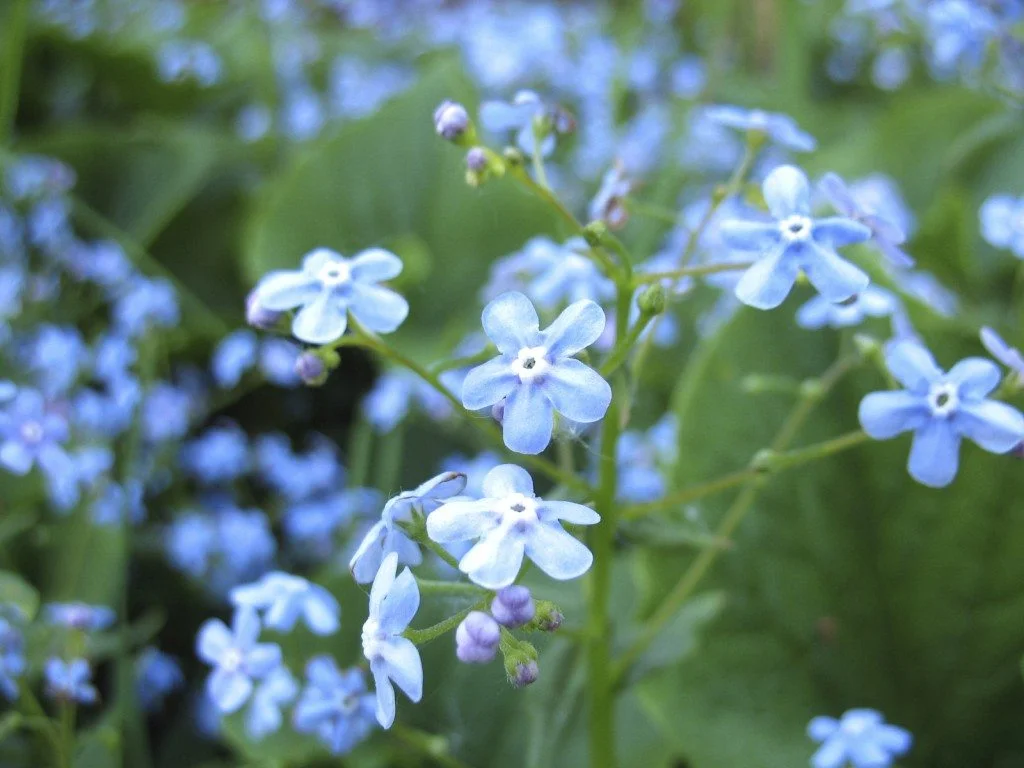
These changing forget-me-nots are scientifically known as Myosotis discolour, and the name comes from the change in their flower colours in different stages. The flowers, when they first start blooming, are creamish-yellow in colour, then turn pink, and finally turn blue when they mature. These plants grow to about 20 inches in height and enjoy partial sunlight. Though they also survive in full sunlight, they are mainly spotted roadside in distributed areas and can survive in home gardens too. These plants are native to Europe but can be seen popularly in Northern America, too, and their flowers bloom in the summer season.
4. Early Forget-Me-Not
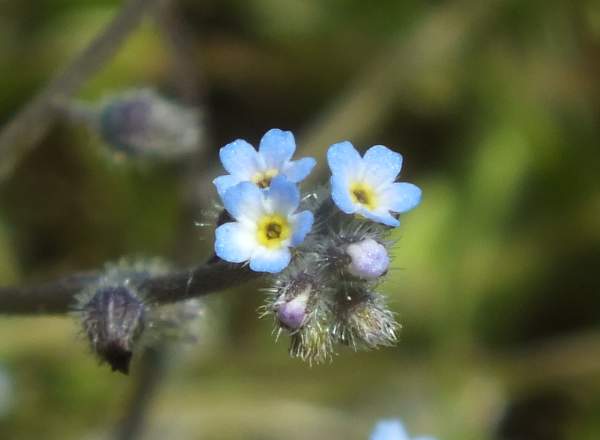
These plants are botanically known as Myosotis Ramosissima; they get the name from maturing early after reaching a height of just 2 inches. These plants have originated in the UK region and are very popular in the northern part. The tiny flowers of this plant have 5 petals with a yellow centre for blue or white colours. A large spread of these plants roadside or in any garden elevates the view of the place. While they bloom in Summer and Spring seasons, they live best in dry climates but need continuous watering to keep the soil moist. They grow well with both partial and sunlight.
5. Wood Forget-Me-Not
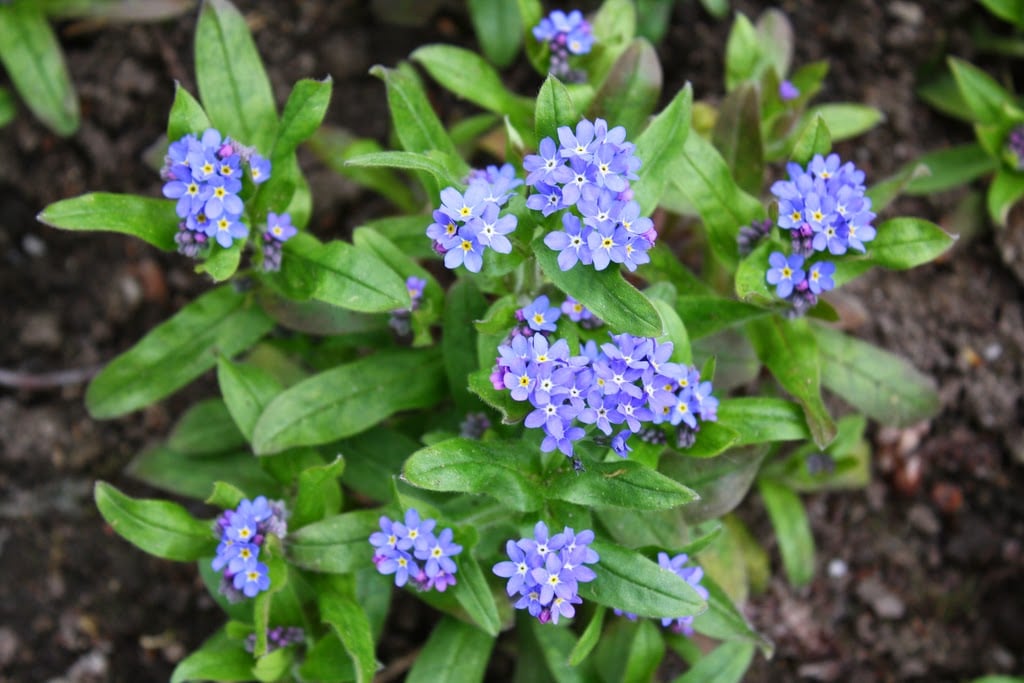
Botanically known as Myosotis Sylvatica, these plants are native to Europe and are also commonly found in Asia. They are also known as the Woodland Forget-me-nots, and they grow up to a height of 12 inches. While they are mostly preferred for their low maintenance, they mostly grow in dry and moist soil with full to partial sunlight. They can grow just anywhere with the right organic soil, from gardens to banks of water bodies. They flower from Mid-spring to Mid-summer and bloom in bright colours like blue, pink, white, or yellow. The green hair-type leaves of the plant are also long, up to 3 inches, and are very resilient to harsh weather.
6. Field Forget-Me-Not
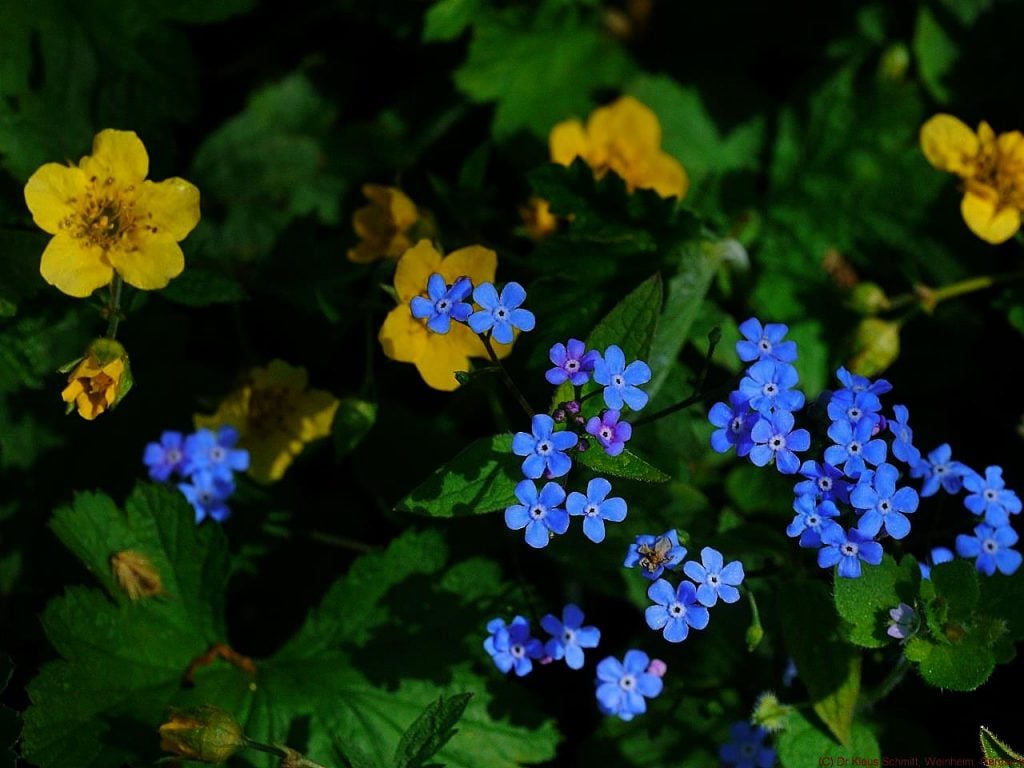
These plants, Myosotis arvensis, are native to Europe and Asia and are also commonly found in North America. The plants can grow up to 16 inches and are considered to be wildflower plants. The plants need very well-drained and sandy soil that is particularly alkaline in nature to grow well. The flowers are shaped like funnels with five petals and are blue in colour with a touch of white and yellow in the centre. They flower from Spring to Summer seasons. One popular thing about these plants is that they can wait till 30 years to find the right conditions to sprout by remaining dormant for long periods.
7. Tufted Forget-Me-Not
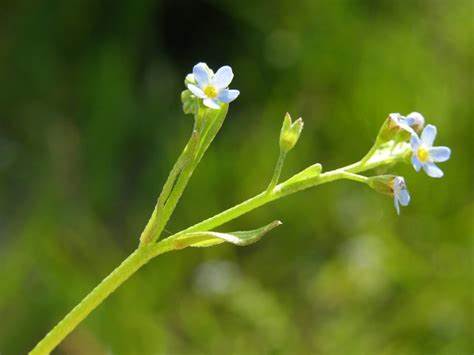
Myosotis Laxa, also known as Tufted forget-me-not or small flower forget-me-not, these plants can go from 4 inches to 16 inches. These plants are commonly found in North America and easily grow on the banks of water bodies, hence categorized as aquatic plants. They usually prefer a wet environment but can also grow in dry conditions if the soil is moist. These plants start blooming in clusters in the late Spring season, and you can find them in colours like blue, pink, red, purple, etc., with a touch of the white border and yellow in the centres. You can grow them in gardens, near your vegetation, or anywhere if your soil is moist.
8. Victoria Rose Forget-Me-Not
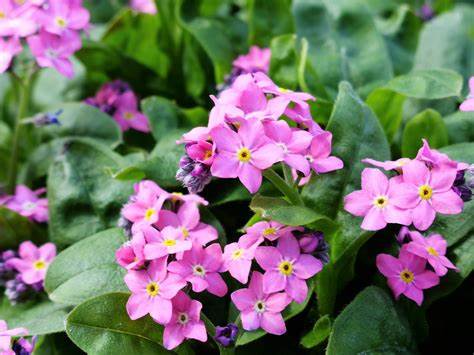
Victoria Rose Forget-me-nots are scientifically known as Myosotis Sylvatica, and they are commonly found in the UK. These are usually planted in the garden because of the beautiful flowers that bloom in the Spring season. They grow up to 6 inches, and the flowers are pink in colour with a touch of golden-yellow in the middle. The plants don’t yield flowers in the first few years, and they grow well in partial shade and wet weather conditions.
9. Alpine Forget-Me-Not
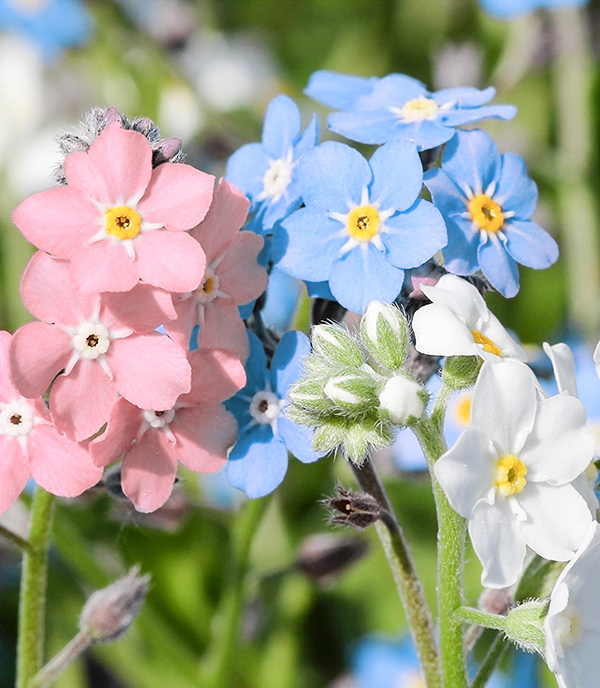
Myosotis Alpestris is the scientific identification of the plant Alpine of the forget-me-Not family. These plants originated and are commonly found in the United Kingdom. It grows to a height of up to 6 inches and blooms flowers in Spring and lasts till the Summer season. These flowers, which are bright blue in colour with yellow eyes, are so beautiful and also the state flower of Alaska. Also known as Scorpion grass Forget-me-Not, these plants grow well in rock covers and woodland formations. They also need moist soil and well-drained soil with partial to full sunlight for healthy growth.
10. Lapland Forget-Me-Not
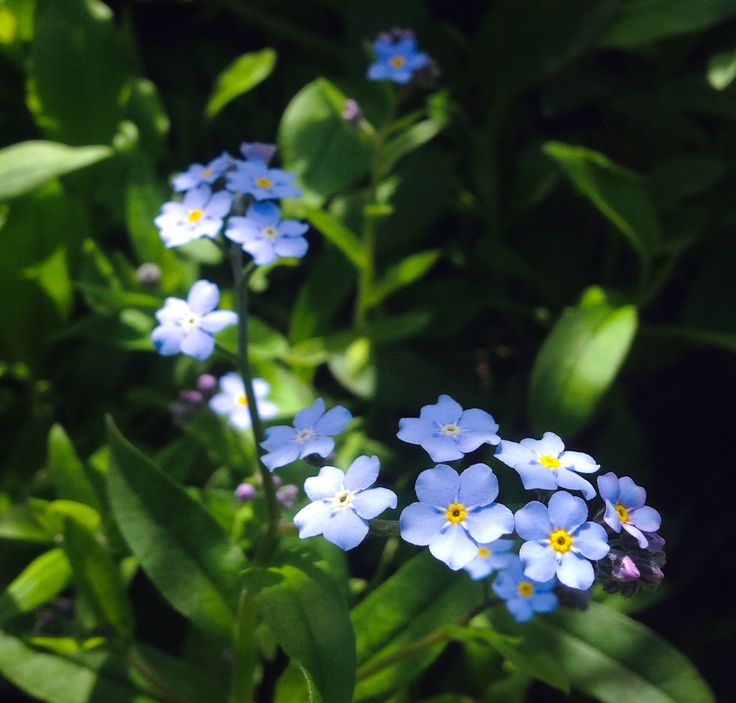
Botanically known as Myosotis decumbens, Lapland Forget-me-Nots are native to Finland and are commonly found in the United Kingdom too. They grow rapidly in the Spring season but bloom flowers only in the Summer season, unlike other plants in the family. They can grow up to 16 inches, and these plants love wet soil. They need their soil to be moist all the time and are commonly found on the banks of water bodies, woodlands, etc. Make sure that you are not exposing the plant to full sunlight all day as they prefer partial sunlight or complete shade for some time if they are exposed to direct sunlight in the other part of the day.
Caring Tips for Myosotis Forget-Me-Not
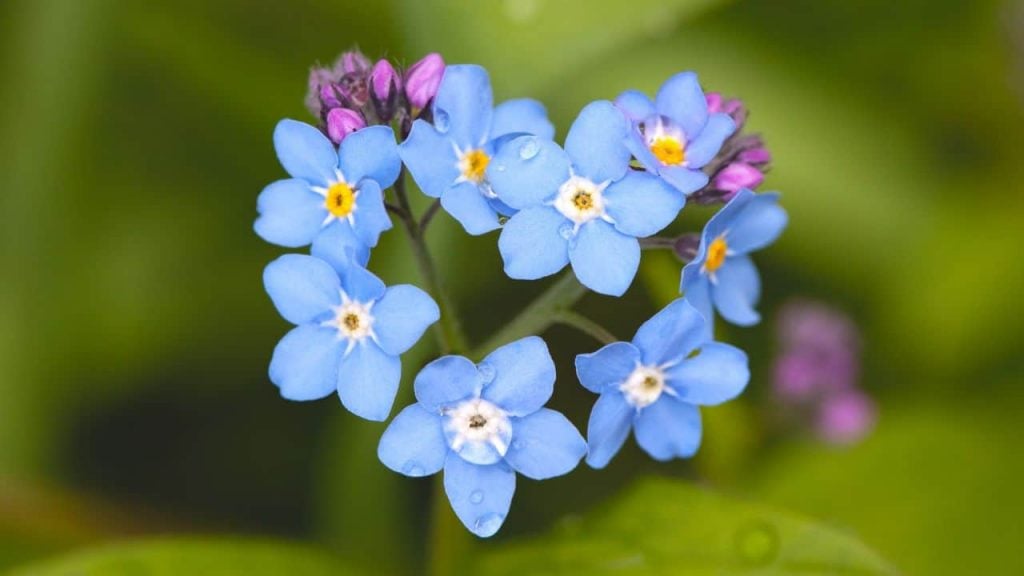
Myosotis Forget-me-not plants are relatively versatile and need very little maintenance to thrive. They withstand the attacks of animals like rabbits and deer. They all attract butterflies, and while they need very little care, some of the points to keep in mind about their care are:
1. Water: While some thrive, most of the plants in the Myosotis family need wet soil conditions to grow healthily. They need regular watering to ensure that the soil is moist and never dry.
2. Light: Forget-me-not plant family needs all the sunlight it can get. Most of them grow in both full and partial sunlight. They need an abundance of sunlight, especially during their flowering seasons, Spring and Summer. Just remember that the more sunlight the plant gets, the more water it needs to keep the soil moist.
3. Soil: Myosotis plants grow well in soil that is rich, organic, well-drained, and moist soil. Check the soil regularly and very carefully, as any reduction in the moisture in the soil will directly affect the growth of the plants.
4. Fertilizer: While it is not mandatory, fertilizing the soil with compost once in a while will allow the soil to be free from any infestation and helps in the healthy growth of the plants.
5. Humidity: Most of the plants in the Myosotis family thrive in humidity, so they grow in warm temperatures and especially during the Spring and Summer.
6. Temperature: While most plants withstand both cool and hot temperatures, the more hot the temperature is, the more water the plants need. With cool temperatures, you need to ensure that your soil is moist and water accordingly.
7. Deadhead flowers: The plants of the Myosotis family are known for blooming beautiful flowers that enhance the views in their presence. However, once they fade, you need to cut them down to allow new flowers to bloom. This is important to allow the space to bloom new flowers as this family produces flowers in clusters.
8. Overwintering: To survive rather harsh weather, once the winter arrives, cut down the plants to one-third or half, as this allows the plants to survive on the little energy that it gets. Don’t expect the flowers to bloom this season, and remove any seeds that can bloom, as this takes up more energy than the plant has in this season with little to no light.
9. Mulch the plant: Even before winter arrives, you can prepare the plant to be ready to withstand frosty weather. Mulch around the roots on the ground in the winter to protect the roots during the winter from weakening.
Summing Up
All in all, Myosotis flowers have been a symbol of affection, love, connection, loyalty, and fidelity in America and Europe for many decades. A reason why they are used for auspicious occasions like Weddings and Birthdays, apart from their nature to enhance the beauty of the place. Though they are mostly blue with yellow eyes, they can also be seen in other bright colors like yellow, pink, purple, white, etc.
Plant them anywhere, on your porch, garden, sunny window, greenhouse, or on the border of your vegetation; they will bring in beauty and butterflies for pollination. All they need is moist soil and sunlight, and they are good to yield flowers in Spring and Summer.
With little maintenance and care, they are a perfect addition to your place.

